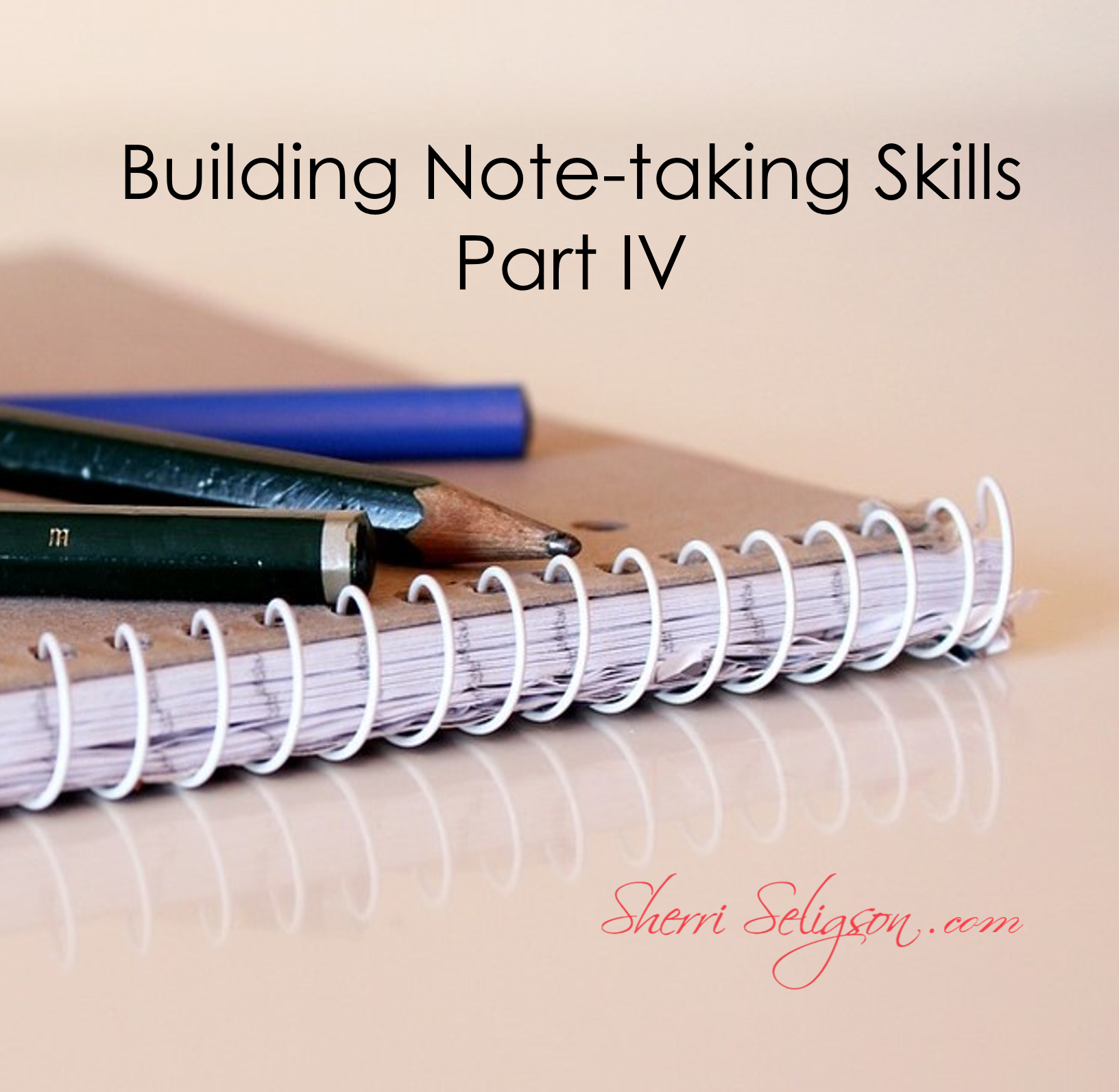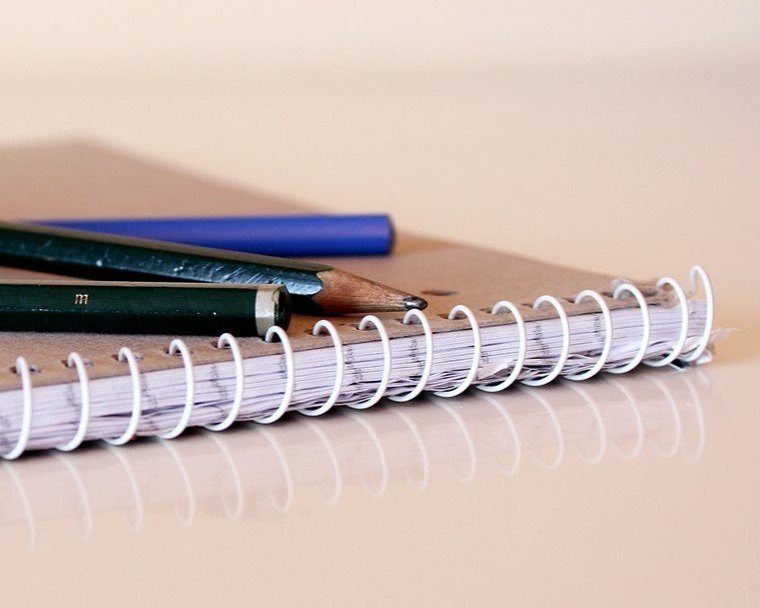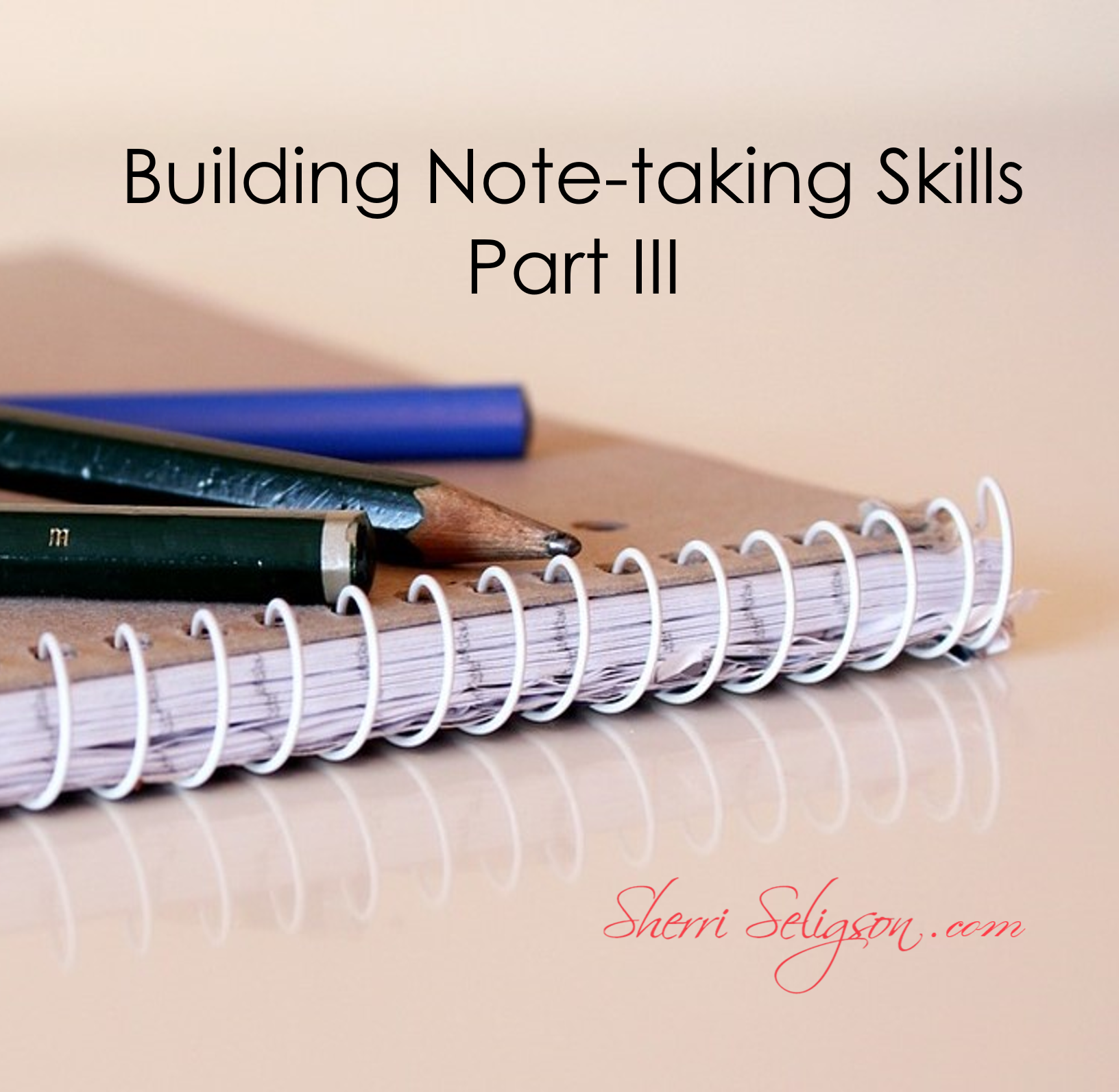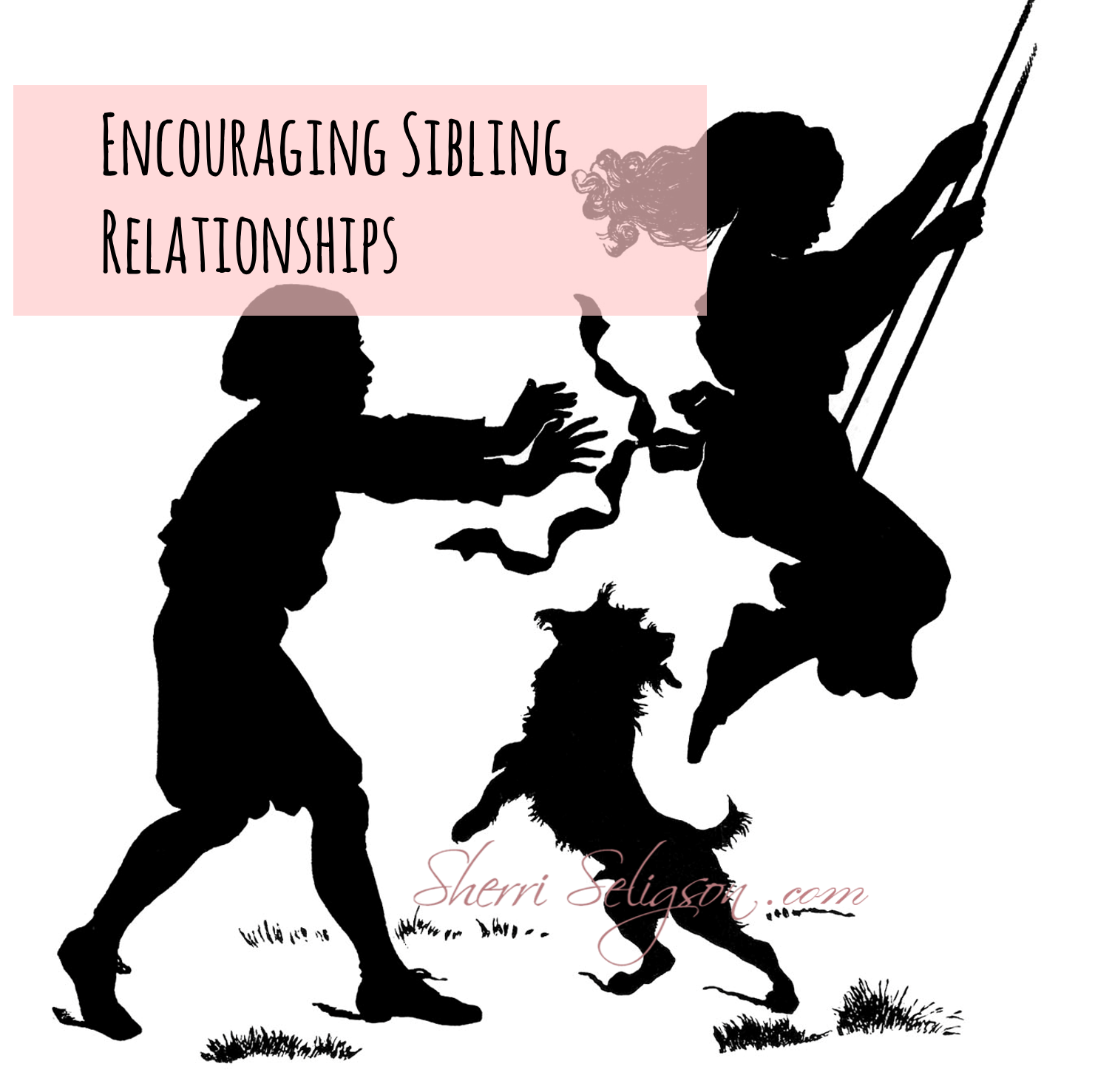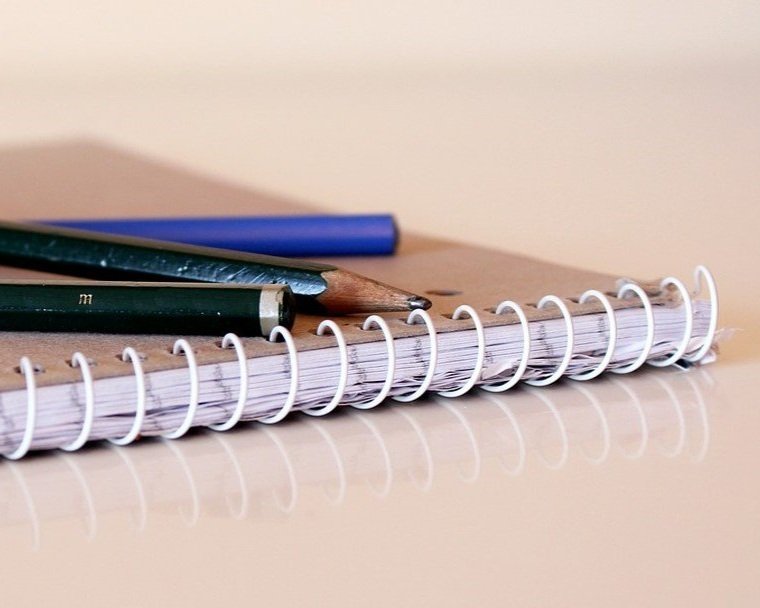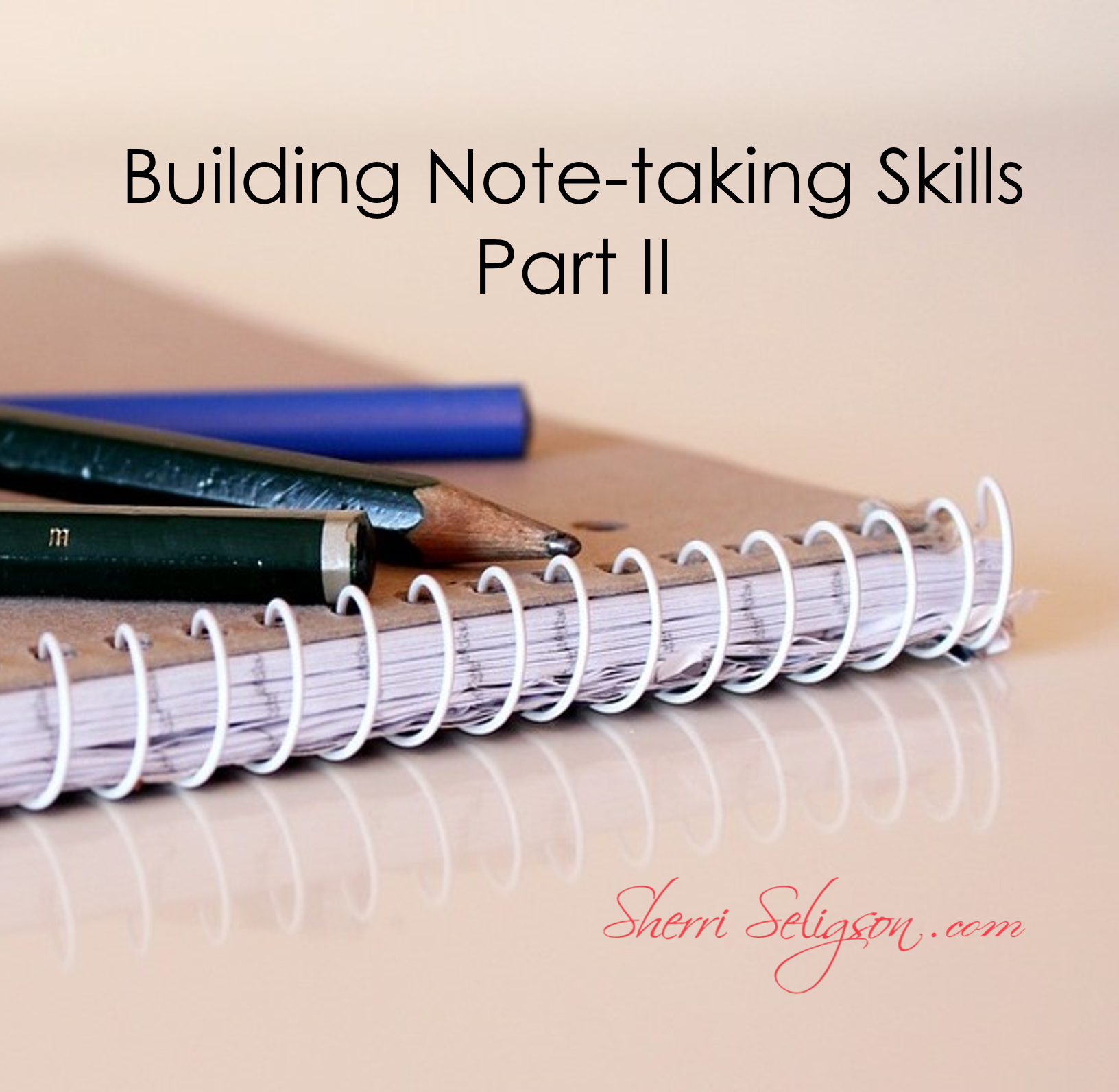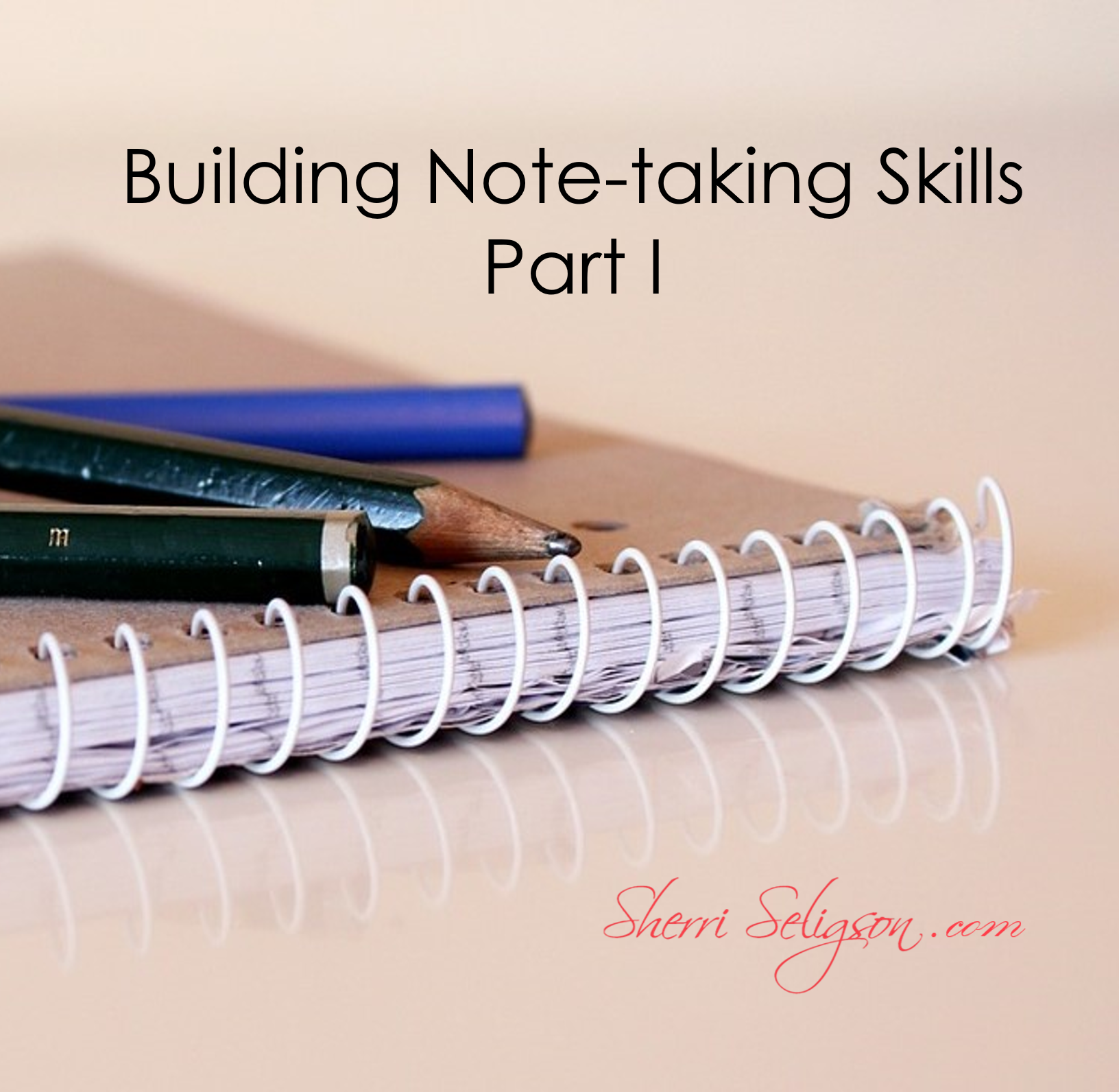
If you have been following along, you know that this is the fourth and final post on how to build note-taking skills for students. The previous parts are HERE, HERE, and HERE.
In this episode (cue the exciting music): Notehand.
Notehand is unlike shorthand, which was a way for secretaries to quickly take word-for-word notes by using special symbols and swirls to later decipher the notes back into a complete script.

Notehand, however, is a way for students to compile important information so they can refer to it later. It should not be word-for-word, but rather point-for-point. Because it is simply not possible to write out words as quickly as someone is speaking, you have to come up with a way to write information in a shorter form in a way that is easy to understand when it is read later.
By using abbreviated words, incomplete sentences, and various symbols that stand for larger or regularly used words, you can more easily notate the information given in a lecture or presentation. The best way to do this is to begin to form a notehand method that works best for YOU. It needs to be intuitive to each person. That means what works for one person may not work as well for another. So here are some helpful hints to get you started.
The first point to remember is that you don’t need to write every word said. As a matter of fact, you don’t even need to write ALL of each word, either. One way to do this is to drop many vowels. “Among” would be amng, “because” would shorten to bcs, “however” would become hwvr.
You can also drop the last letters of long words. “Medium” would be med, “abbreviation” would be abbrev, and “circumference” would be circum.
Within a sentence, small articles and short words can be dropped. You can eliminate is, are, was, were, a, an, the, this, of, and many more. Pronouns can also often be dropped. Words like they, these, his, that, and them. But you don’t want to remove connecting words or words that help to join important ideas.
Many words can be replaced with symbols. Use the ampersand (&) for and, w/ can replace with, w/o for without, and w/in for within. Betw for between, # for number (NOT a hashtag!), #s for numbers, and govt for government. 1˚ means primary, 2˚ means secondary, and so on. Ordinal numbers can be written by 1st, 2nd, 3rd, etc. Now, some of these you are probably already using, but it is good to remind yourself how easy it is to shorten your words to write more quickly.
When there is a summary statement, three small circles in the shape of a triangle like this ̥ ˚ ̥ means therefore. It is a good way to highlight a concluding or summary idea.
Of course you can use the symbol + for plus or and, = for equal or is, > for more than or greater than, and < for less than. You can also use an arrow for leads to or produces.
So how might this be helpful in a sentence? Well, let’s take a sample sentence and then write it with notehand:

Now look at this one:

Can you see here how only the important information is written? The notes just include the facts and any needed info to connect those facts.
Another helpful hint is to figure out if there are any frequently used words during a course or in any lecture type. For example, if you taking an American history course, you will very likely be hearing the name, George Washington. You can determine to always abbreviate his name GW whenever you hear it. In a physics or physical science course, the word, energy, pops up often. It can be written as a capital E.
In biology, photosynthesis is a word that is too long to take the time to write out. You can shorten it to photsyn or whatever makes good sense to you.
The point here is to come up with a convention that helps you to take down information in a way that can easily be referred to later. It has to be intuitive to you. So there are no step-by-step instructions. However, as you practice taking notes, you will get better and better at doing it.
Think of this as learning to snow ski. You can watch videos on how to ski. You can talk with people who have done it and ask them for help. But the only way you are actually going to learn it is to go on those slopes and do it. You start slowly, perhaps on a bunny slope which is gentle and short. Then once you have mastered skiing there, you are more prepared to go for longer runs!
I know. Note-taking may not be as fun as downhill skiing, but it does make education more enjoyable if you are able to remember important information presented to you. It will benefit you throughout your life, not only during your high school and college years.
By listening to a lecture, writing notes into a notebook or laptop, and reviewing the notes at a later time, you will better remember the information because it has been processed in an auditory, visual, and kinesthetic manner. This simply means the information has passed to your brain through many channels of your nervous system: your ears, eyes, and hands.
And by using these methods, you will always have a “plan of attack” when you enter a presentation. You will be more able to confidently sift through the information given to you, writing it down in a way that will be useful for study or reference at a later time. This leads to a better understanding of the information given which ultimately results in successful learning!
